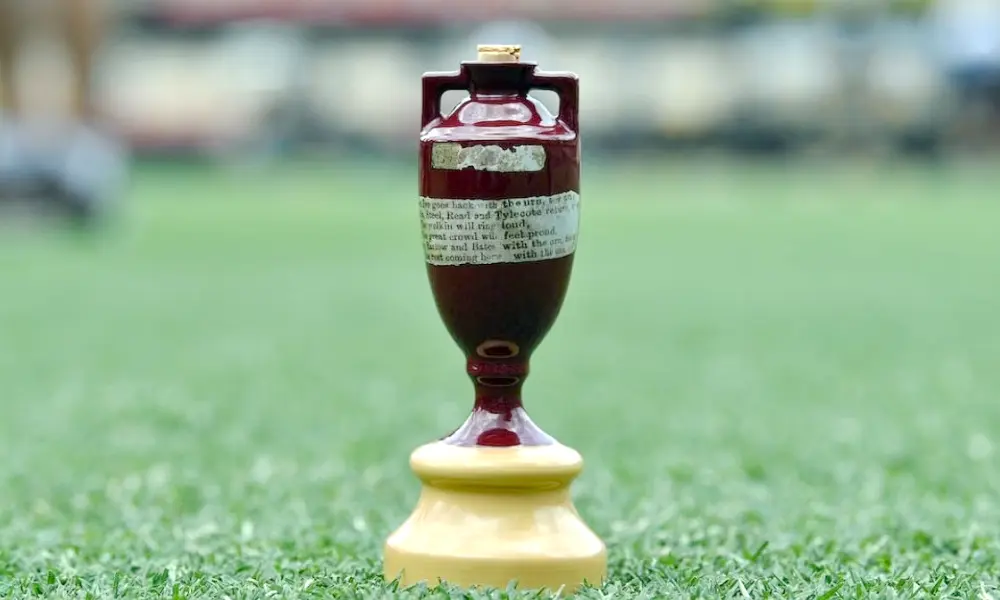The Ashes Series: A Tale of Rivalry and Cricketing Heritage

In the world of cricket, few rivalries evoke as much passion, history, and intensity as the Ashes series between England and Australia. Originating from a satirical obituary published in a British newspaper in 1882 after Australia's first Test victory on English soil, the Ashes have since become a symbol of cricketing supremacy and national pride for both nations. Let's delve into the captivating story behind one of cricket's most storied contests.
Origins and Symbolism
The term "Ashes" originated during the 1882-1883 series in England when Australia achieved its first Test victory at The Oval in London. The Sporting Times published a mock obituary stating that English cricket had died, and "the body will be cremated and the ashes taken to Australia." This humorous piece captured the imagination of cricket fans on both sides of the world, and thus, the Ashes series was born.
The Trophy
The Ashes series is played for the prestigious urn, which is a small terracotta urn said to contain the ashes of English cricket. While the urn itself remains in the custody of the Marylebone Cricket Club (MCC) museum at Lord's Cricket Ground, the series winner takes home a replica urn as a symbolic trophy of victory and cricketing supremacy.
Historical Context and Evolution
Over the decades, the Ashes series has evolved into a biennial event alternating between Australia and England. It has witnessed some of cricket's most iconic moments and legendary players, shaping the course of cricketing history. From the dominance of Australia in the early 20th century, epitomized by the brilliance of Sir Donald Bradman, to England's resurgence in the 2000s led by players like Andrew Flintoff and Kevin Pietersen, the Ashes have consistently delivered unforgettable cricketing drama.
Iconic Matches and Moments
Bodyline Series (1932-1933)
One of the most controversial series in Ashes history, the Bodyline series saw England employ aggressive bowling tactics aimed at neutralizing Bradman's batting prowess. This tactic, known as "leg theory," caused a diplomatic row between the two nations but remains etched in cricketing lore.
Botham's Ashes (1981)
Ian Botham's heroic performances with both bat and ball in the 1981 Ashes series against Australia, famously known as "Botham's Ashes," turned the series on its head and reaffirmed his status as one of England's greatest all-rounders.
The 2005 Ashes
Dubbed as one of the greatest Test series ever played, the 2005 Ashes series captivated global audiences with its thrilling cricket, close contests, and unforgettable moments, culminating in England reclaiming the Ashes urn after a gap of 18 years.
Cultural Significance
Beyond the boundaries of cricket, the Ashes series holds immense cultural significance for both England and Australia. It represents a fierce sporting rivalry rooted in history, tradition, and national pride. The series attracts fervent support from fans who paint their faces, wave national flags, and passionately cheer for their respective teams across iconic venues such as Lord's, The Gabba, and the Melbourne Cricket Ground (MCG).
Looking Ahead
As cricket continues to evolve with the advent of T20 leagues and global tournaments, the Ashes series remains a cornerstone of the sport's heritage. Future encounters promise to uphold the tradition of competitive cricket at its finest, showcasing the skills of modern-day stars and perpetuating the legacy of past legends.
Conclusion
The Ashes series between England and Australia transcends sport; it embodies a narrative of sporting rivalry, tradition, and legacy. From its humble beginnings as a playful jest to becoming one of cricket's most prestigious contests, the Ashes series continues to captivate audiences worldwide. As cricket enthusiasts eagerly await each installment of this historic rivalry, one thing remains certain: the Ashes will continue to define cricketing excellence and inspire generations of players and fans alike, ensuring its place as a cherished chapter in the annals of cricket history.

